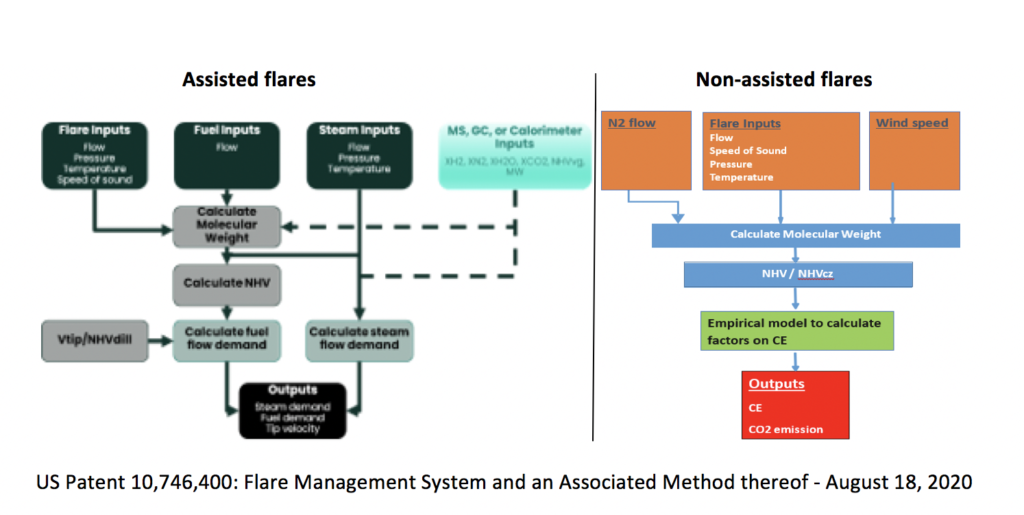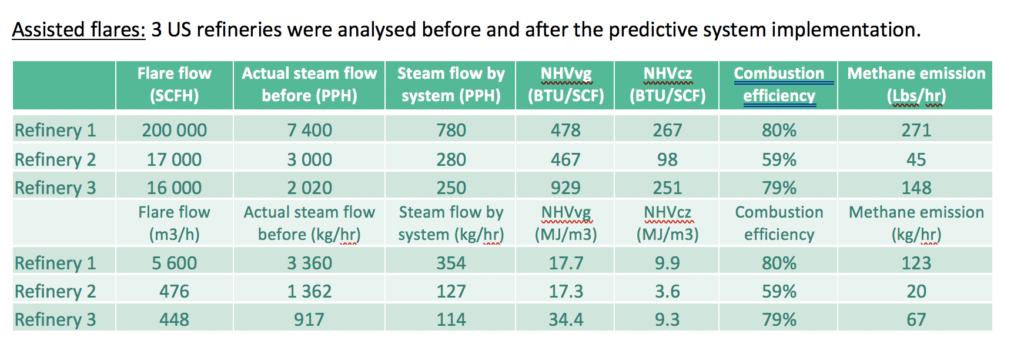
Predictive analytics describes the process by which measured parameters and models are combined to derive information on flare efficiency. They are analogous to Predictive Emissions Monitoring (PEMS) systems used to track emissions of pollutants such as NOx from gas turbines. For flares, predictive analytics system uses a method based on a parametric modelA Parametric Model is a concept used in statistics to describe a model in which all its information is represented within its parameters. In short, the only information needed to… Learn more… and Computational Fluid Dynamics (CFDis a branch of fluid mechanics that uses numerical analysis and data structures to analyse and solve problems that involve fluid flows. Computers are used to perform the calculations required to simulate… Learn more…) studies with input data coming from flare gas composition, flow rates, flare design and environmental factors such as wind speed. Predictive systems has the advantage of being permanently installed, providing continuous and near real-time feedback on flare performance, allowing adaptations to be made to maintain efficient combustion. Currently available systems are independent of flare vendor and control system provider.

Advantages
The CE range is 50%-99.8% with an absolute error of 1.05% for CE% ≥ 95%
Easy to implement and set up, easy to tune to wide variety of flares
Flow meter vendor agnostic
Can work locally and/or be cloud based for unmanned assets
When there is a single flare boom with a single flame, it distinguishes LP flare from HP flare
Works with onshore and offshore facilities
Field proven with installations Downstream (33), Midstream LNG (4), Upstream (2) since 2017
Provides data on multiple flare parameters, such as flow rate, temperature, pressure, MW
Underlying measured parameters each have an estimate of uncertainty
Limitations
Requires an ultrasonic flowmeter on the flare line to feed data to the system
Inferred measurement (but verified with available online analyzers in Downstream facilities)
Validation relative to reference methods, such as extractive samplingThe process of measuring flaring combustion by extracting part of the plume and analysing the absolute quantities of burnt and unburnt gas by measn of a traceable method such as... Learn more..., is complex
Go Deeper
Case study

Assisted flares are often over-steamed leading to incomplete combustion and CH4 slip. Here is a flare incident controlled by the predictive analytics system resulting in staying in compliance with the EPA.
Non-assisted flares: Offshore on one FPSO monitoring both LP and HP flares.

The graph represents the CE from LP flare and HP flare.
HP flare CE% from the system has been post-processed to account for N2 input that was not initially available.
The efficiency of combustion can be calcualted based upon the flare gas composition, volumes and data on the flare design from which exit velocities and mixing can be estiamted. These calcualtions can either be done by the operator directly or obtained from pre-built simualtion software. Recent advances incomputing have supported development of predictive systems providing real-time feedback on calculated values. In all cases, the quality of calculations is dictated by the quality of data that is available on flare volumes, compsition and flare design.